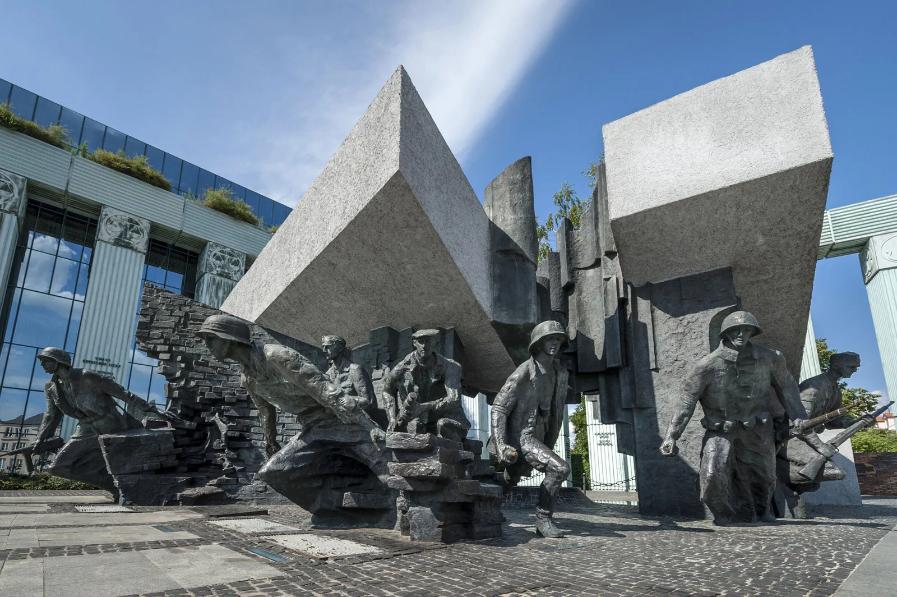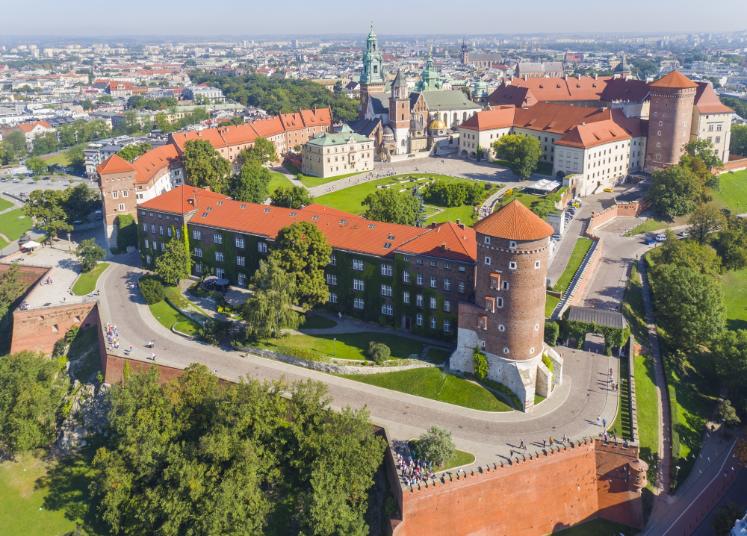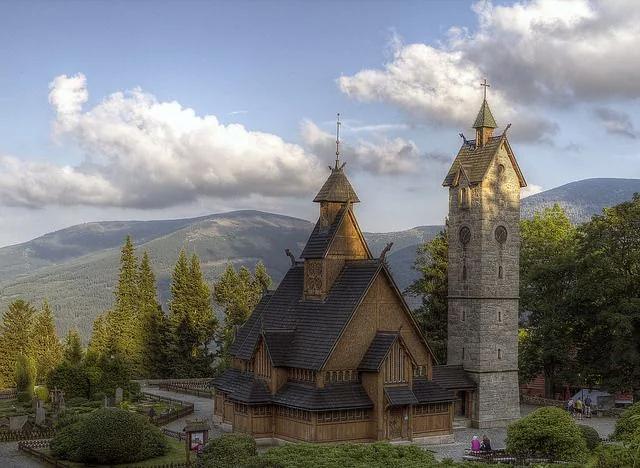
The Warsaw Mermaid
This guardian mermaid is one of Poland’s most iconic symbols – and it’s impossible to miss her in the heart of Warsaw. You’ll find it in the heart of Warsaw’s Old Town square. Called “Syrenka” in Polish, she’s acquired legendary status in the city and is now on drawings, carvings and fountains across the capital. The legend holds that she came from the Baltic Sea. Some hold that she has a twin sister, the Little Mermaid of Copenhagen. When The Syrenka swam up the Vistula River to the old town, she caught sight of some fishermen. She decided to have a bit of fun and free their catch. The fisherman was, understandably, fuming but once she started singing and they were mesmerised. A while later, a rich merchant captured her. Those friendly fishermen managed to free her, and in gratitude, the mermaid promised to protect them at sea.

The Warsaw Uprising Monument
This 33-foot (9.8 metre) bronze statue sits on the southern side of Krasiński Square. It’s been described as “the most important monument of post-war Warsaw” and today it’s one of the most visited landmarks in the country. It depicts a group of fighters in combat, running to a crumbling building. The memorial commemorates those who bravely fought against Nazi occupation and honours those who fought in the famous Warsaw Uprising. It had been planned to coincide with Allied forces approaching Poland, but Soviet troops never arrived, leaving Poland to fight alone. After 63 days of fighting, food shortages and little water, German forces captured the city, expelling the population and looting the buildings. It was later used as Soviet propaganda as evidence for the Polish Home Army’s failure. When the Iron Curtain fell, they were finally given the recognition they deserved.

Wawel
Krakow was once the political and cultural heart of Poland. Wawel Castle, which sits on a limestone hill in the city, is one of the country’s most important historic sights. The collection of Romanesque, Renaissance and Gothic architecture dates back to around the 14th century. It’s now a museum with five different attractions inside: Crown Treasury and Armoury, State Rooms, Royal Private Apartments, Lost Wawel and the Exhibition of Oriental Art. Once upon a time, the Kings of Poland would have been coronated and buried here. As you might expect for such a stately location, its collections are impressive. In the State Rooms, you’ll find seven floors of gilded and frescoed reception rooms, the Crown Treasury houses Poland’s Crown Treasures and the Cathedral features 18 different chapels. It’s now a Unesco World Heritage Site too.

The Vang Stave Church
This peculiar wooden church has a fascinating history. It’s actually from the Norwegian town of Vang, its namesake. Built in around 1200, the four-post single-nave stave church would have been one of around 1000 similar structure. Today, there are only thirty stave churches remaining. By the mid-19th century, the parish had outgrown the Vang Church and it needed costly renovations. Painter Johan Christian Dah sparked the movement to save the church. After his attempts to preserve the church failed he realised he would need to buy it. Countess Frederica von Reden of Bukowiec then convinced King Wilhelm IV to move the church to the Karpacz. Barges transported the church along the river and nine horse wagons took it the rest of the way. To make way for the church, the rectory, school and cemetery were all blown up. Around 100,000 tourists visit every year to explore the fairytale cabin-like structure.